In the heart of Central Pennsylvania's rugged terrain lies a hidden gem for hikers seeking both challenge and stunning vistas - the 1000 Steps Trail. This winding ascent, featuring 1,039 stone steps, weaves through the lush forest of Jacks Mountain, near the town of Mount Union in Huntingdon County. More than just a hike, this storied trail offers a window into the past, where the determination of quarry workers in the 1930s met the natural beauty of the Juniata River Valley. From the toil of laborers to the timeless allure of panoramic vistas, this is the tale of a trail that bridges the realms of nature and human endeavor.
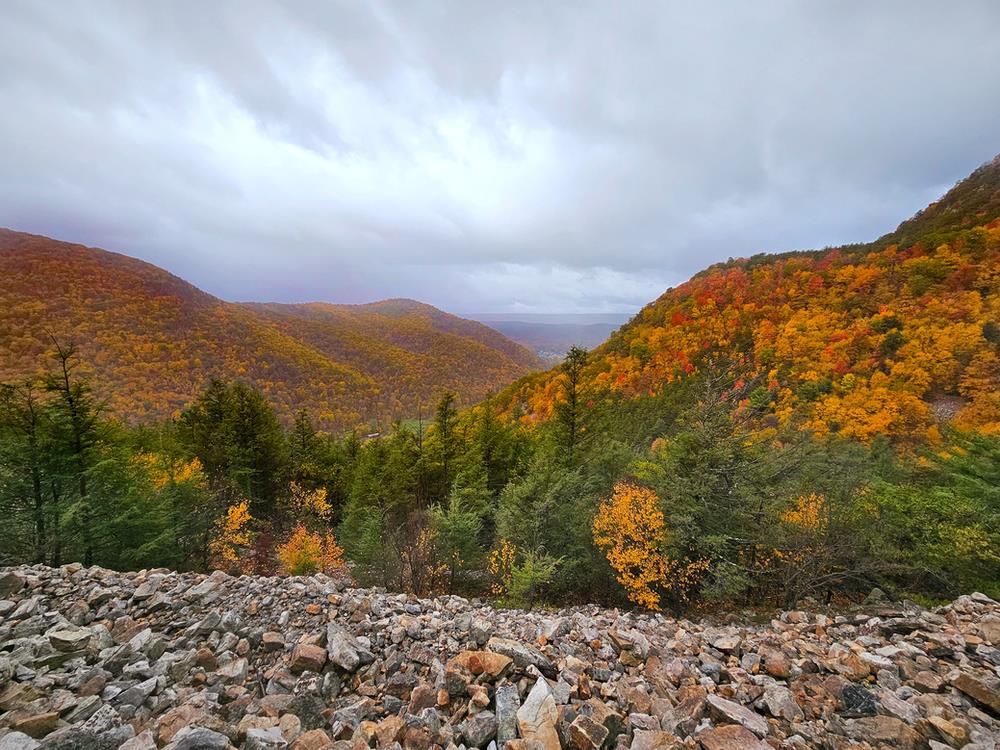

Trailhead elevation 588'
Water none
Don't miss the Mapleton Overlook
History of the 1000 Steps Trail
As early as 1899, refractory companies began extracting silica-rich Tuscarora Sandstone from Jacks Mountain. The valuable material was in high demand for its applications in the production of iron, steel, and railroad industry furnaces. Laboring under gruelling conditions, quarry workers toiled long hours on the mountain, employing sledgehammers to fracture the stone. The extracted stone was subsequently transported down the mountain using mine cars, crossing a bridge that spanned the Juniata River. When these raw materials reached nearby factories, they were processed to yield hundreds of thousands of bricks each day, earning nearby Mount Union the title "Brick Town USA".
Getting to work everyday was a challenging ordeal for the quarry workers. Often, they had to walk for miles just to reach the foot of Jacks Mountain. From there, they faced the arduous task of ascending the mountain, either by walking up the steep locomotive inclines or take a riskier route by hitching rides on steel dump cars, an option that claimed the lives of at least two men.
Following the devastating 1936 St Patrick's Day Flood, which washed away the bridge spanning the Juniata River, the brick company opted not to lay off its employees. Instead, they assigned workers the job of constructing a stone stairway up Jacks Mountain, for which they used every single day to get to work, until 1950.
Decades later, in a tribute to the quarry workers and their counterparts in Mount Union's refractory industry, the the Save Our Steps Committee mobilized both public and financial support to preserve the stairway, which was on the verge of losing public access. Today, the same stairway that quarry workers used to ascend Jacks Mountain more than 70 years ago has been rebranded as the 1000 Steps Trail, attracting tens of thousands of hikers each year in search of a demanding ascent up the mountain and an opportunity to enjoy its two beautiful overlooks.
Hiking the 1000 Steps Trail
Parking for the 1000 Steps Trail can be found along a busy stretch of US-22 near coordinates 40.3916545, -77.9141318. The gravel lot can accommodate roughly two dozen vehicles.

To reach the trailhead, walk roughly 100 yards from the right side of the parking area until you spot a clearly marked trail sign within a break in the trees.
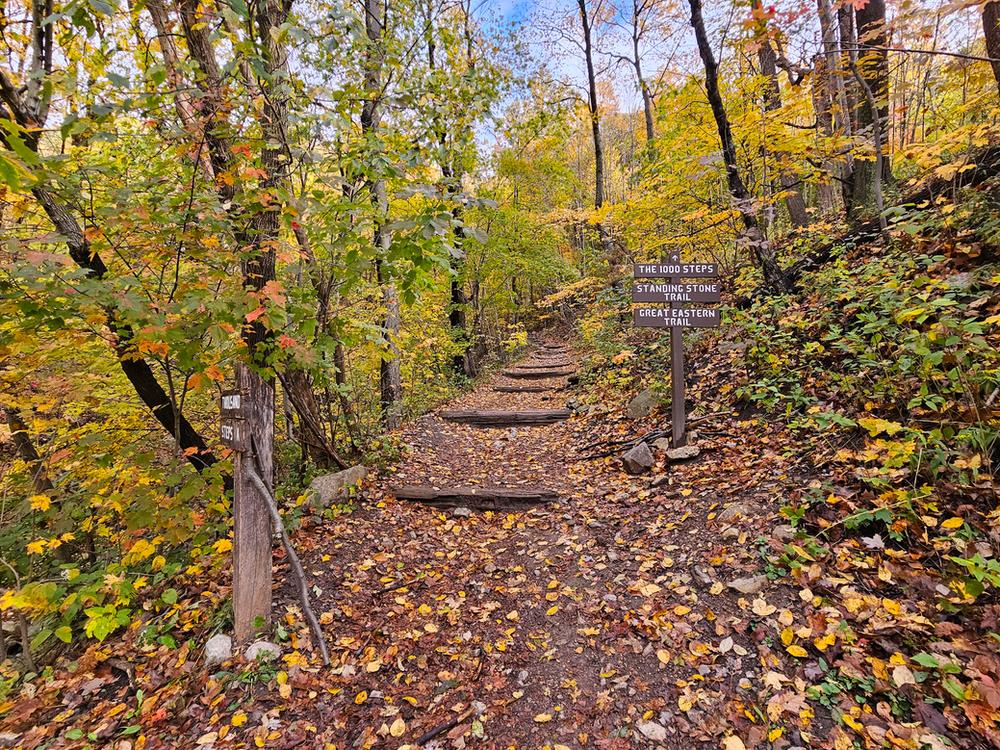
From the trailhead, the initial tenth of a mile lead along a dirt and stone path until arriving at an information kiosk providing insights into the trail's construction and the quarry work on Jacks Mountain.
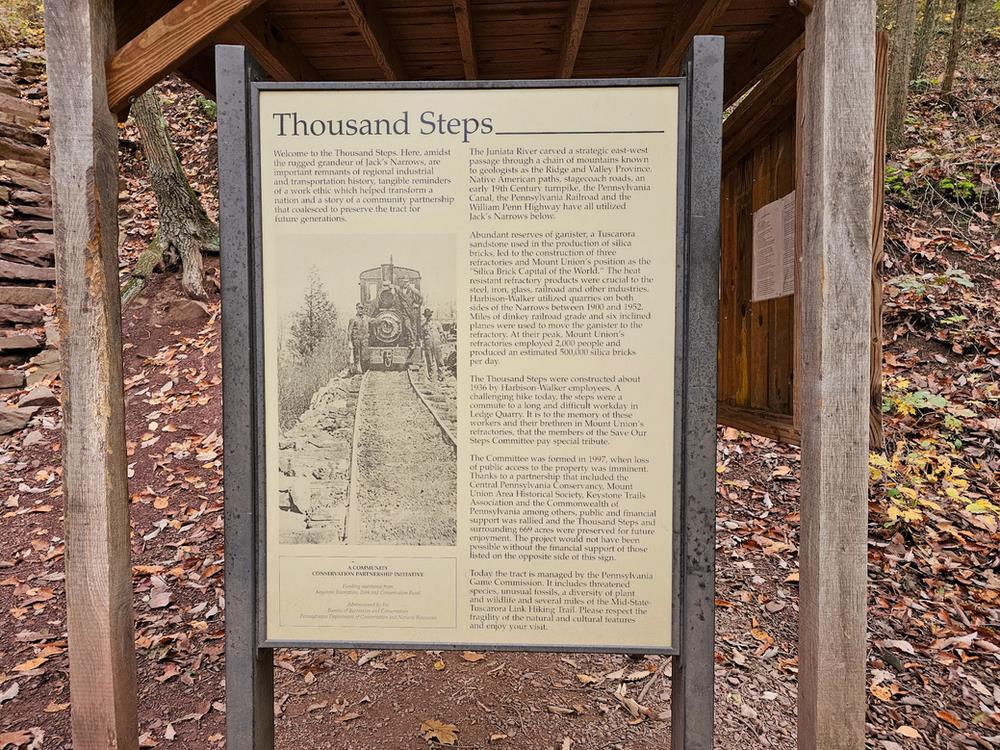
From the kiosk, the 1000 Steps Trail becomes increasingly challenging as it climbs up Jacks Mountain with a relentless series of stone steps. To put its steepness into perspective, let's compare it to the steepest mile of the 5-mile ascent up Colorado's Mount Elbert, the tallest peak in the Rockies, which gains 1,400 vertical feet. In contrast, the 1000 Steps Trail accumulates a gnarly 850 vertical feet of elevation gain in just half a mile.
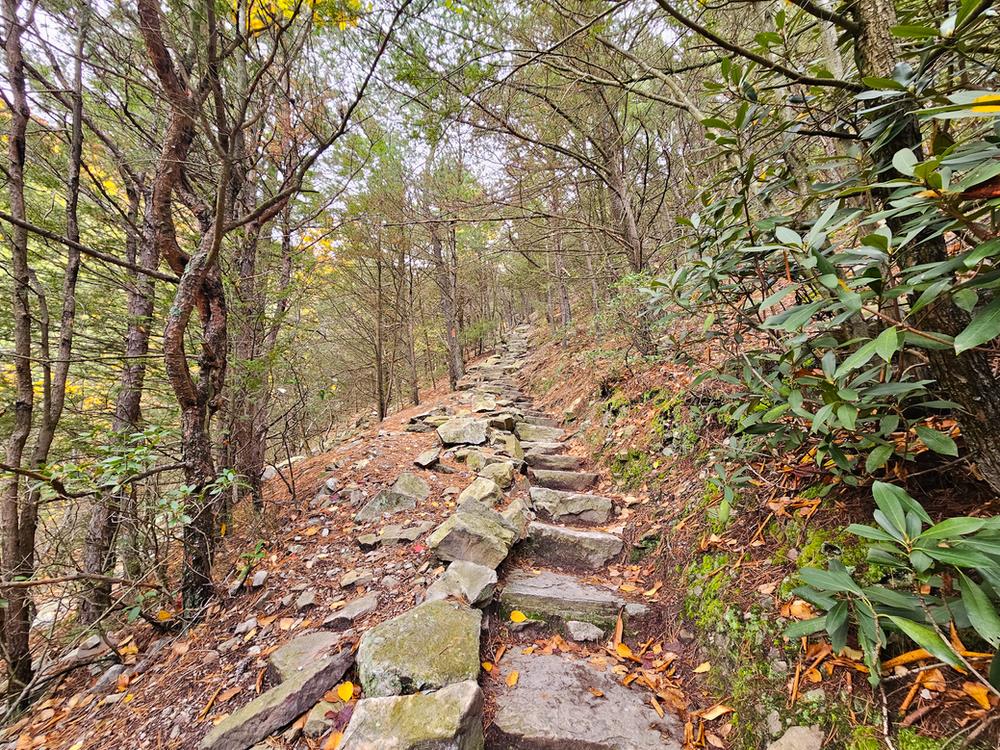
Along the stone staircase, trail maintenance workers have placed markers every 100 steps to help hikers gauge their progress on the trail.
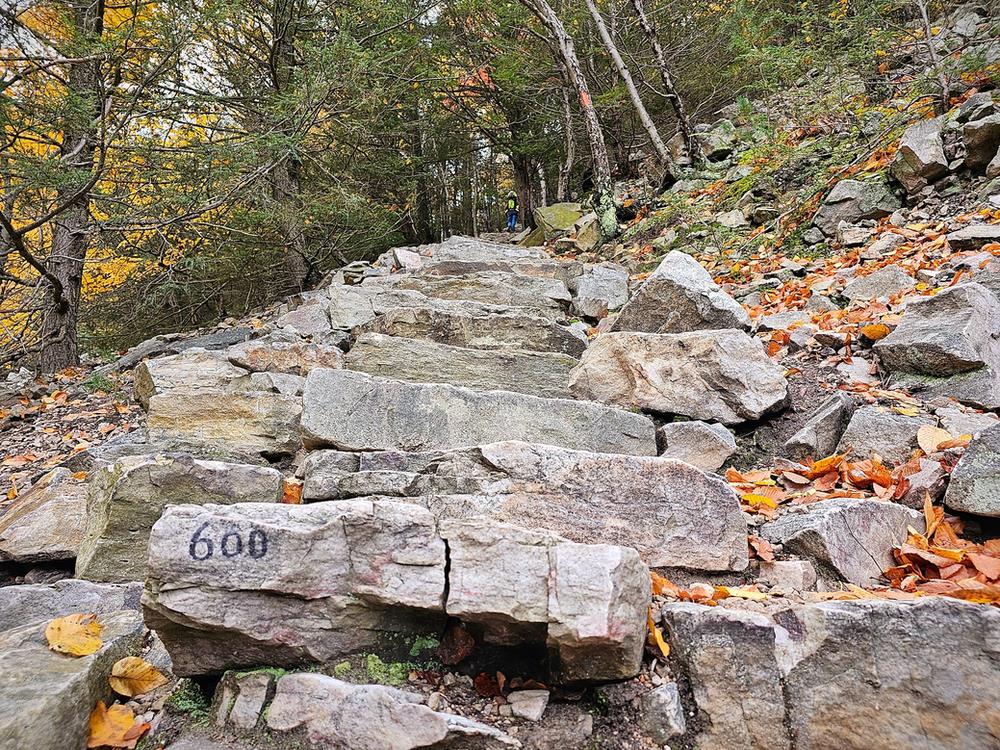
After ascending 850 feet over half a mile, the 1000 Steps Trail terminates at a marked junction. Before returning, consider visiting two nearby overlooks. To reach the East Viewpoint, also known as View 3, follow a very level trail that extends 0.4 miles from the right side at the top of the 1000 Steps Trail.
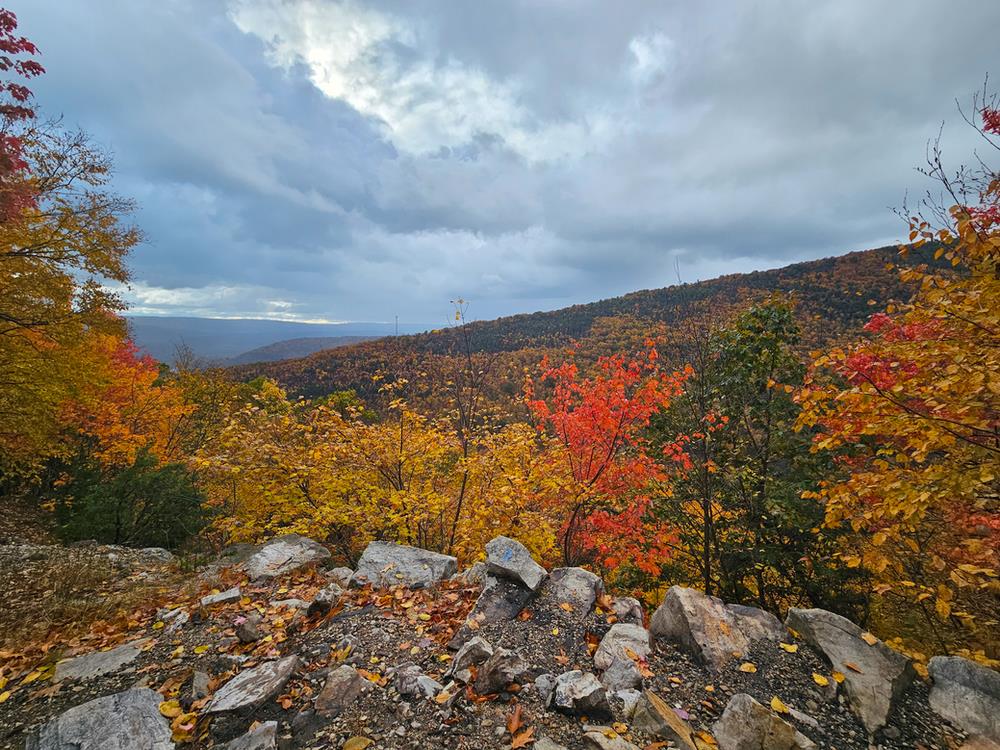
While the overlook isn't overly scenic, the views leading to the viewpoint are superb, notably those within the first 0.2 miles, similar to the view shown below.

The valley below, through which the Juniata River flows, is called Jacks Narrows. It was named after Jack Armstrong, an eighteenth century fur trader, who in 1743 seized the horse of Mushemeelin, a Delaware Native American who owed a debt to Armstrong. In response, Mushemeelin and two other natives pursued Armstrong to the Juniata River narrows and took the lives of Armstrong and his two servants. As a result, the valley came to be known as "Jacks Narrows".
To access the second overlook, known as Mapleton Overlook or View 5, hike 0.6 miles to the left from the conclusion of the 1000 Steps Trail. As you make your way to this overlook within the first 0.1 miles, you'll come across the Dinkey Shed. This historic structure, now gutted, served as the storage and maintenance facility for small gasoline-powered locomotives, known as "dinkies," which were used to transport rock loads from Jacks Mountain.
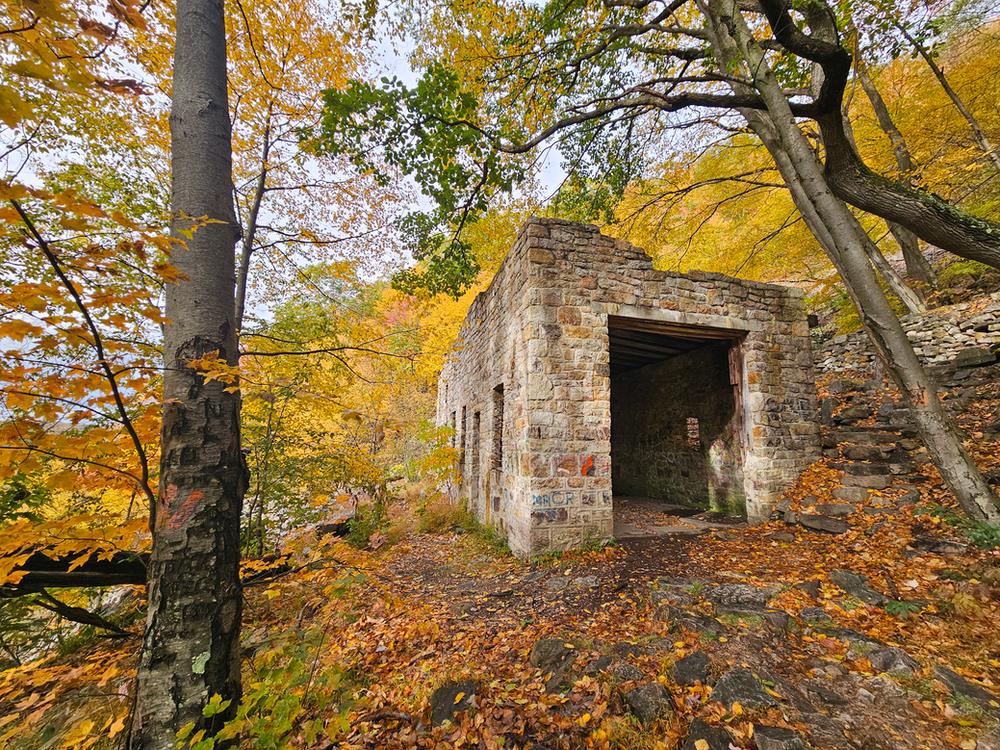
From the Dinkey Shed, the trail ascends another stone staircase, and after covering an additional 0.4 miles, arrives at the Mapleton Overlook, also known as View 5.
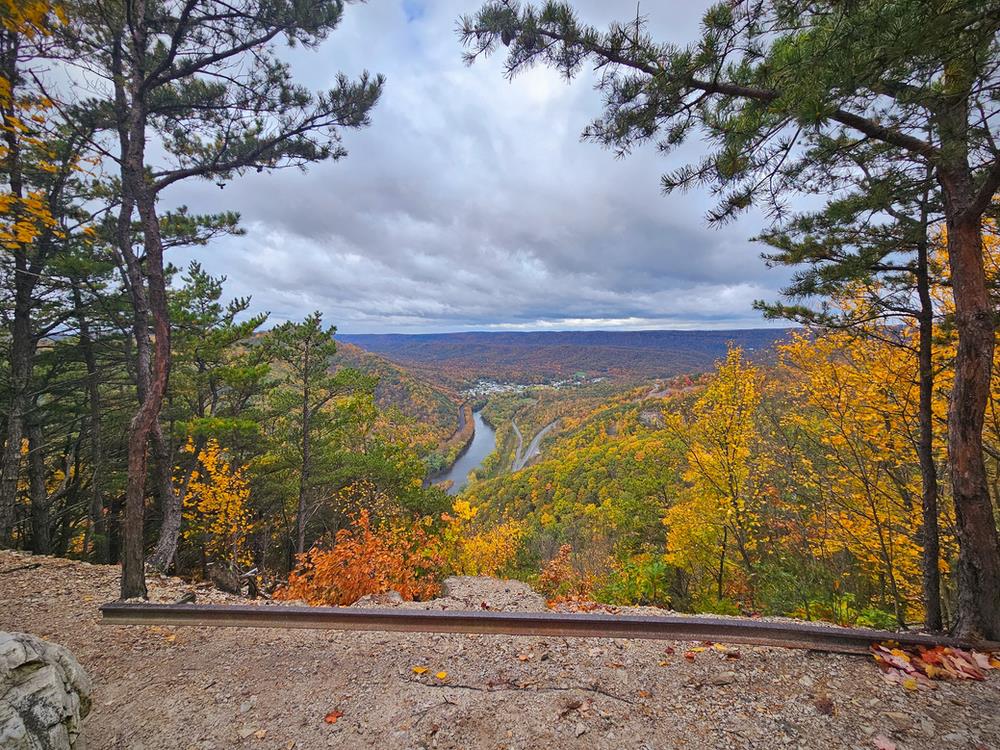
Here, you'll have a great view of the town of Mapleton and the Juniata River, as well as the remnant of a narrow-gauge rail that was used to transport loads of sandstone off the mountain.
When you're done taking in the view, simply retrace your steps back to the 1000 Steps junction and follow it back to the parking area.
https://www.greatamericanhikes.com/post/hiking-pennsylvania-s-historic-1000-steps-trail
 CampingSurvivalistHuntingFishingExploringHikingPrivacy PolicyTerms And Conditions
CampingSurvivalistHuntingFishingExploringHikingPrivacy PolicyTerms And Conditions
